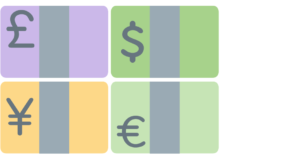Global equity markets performed well through the third quarter. This continued the rally that has occurred over 2025. The MSCI World Index (hedged into AUD) returned 7.7% for the quarter.
Sentiment improved in July as trade tensions eased, with the USA announcing trade deals with the EU, Japan, and others. August was marked by a strong US earnings season and growing expectations of looser monetary policy, particularly in the USA, where weaker employment data led markets to anticipate rate cuts. September continued strongly in global equities, driven by resilience in consumer spending and the continuation of AI in US markets.

USA
US equity markets were strong this quarter (the S&P returned 8.1%). The US Federal Reserve kept rates steady in July, resisting political pressure to cut. However, by August, Chair Jerome Powell’s tone shifted market expectations toward imminent rate cuts. Despite some signs of labour market softening, US GDP growth was a positive surprise, supported by resilient consumer spending.

Europe
European equities posted more modest gains. The MSCI Europe Index (in EUR) returning 3.2% over the quarter. The European Central Bank left rates unchanged in July and September, following a series of cuts since late 2024; as policymakers weighed risks to growth and inflation from ongoing trade uncertainty.

Asia
Asian equity markets were very strong over the quarter. Chinese, Taiwanese and Korean equities all posted double digit returns for the September quarter (in local currency). Stronger than expected GDP growth in China and very positive sentiment toward AI linked stocks were some key supports for major Asian equity markets.

Australia
Australian equities delivered a 5% return for the quarter, with the Materials sector a clear outperformer, returning 21.2%. In August, the RBA cut rates to 3.6%, its third cut of 2025, reflecting inflation that had moved closer to the target range. In September, the RBA elected to leave rates unchanged. The RBA considered some signs of some persistent inflation and moderate tightness in labour markets as sufficient reason to leave the cash rate at 3.6%.

Currency and bonds
Bond markets delivered mild positive returns over the quarter: Australian bonds returned 0.4% and Global bonds returned 1%. US bonds in particular likely responded to weaker labour market data, along with expectations for more rate cuts from the US Federal Reserve.
The Australian Dollar rose 1.1% relative to the USD for the September quarter. The AUD’s performance moderated after a period of heightened volatility in late 2024 and in the period surrounding Liberation Day.


